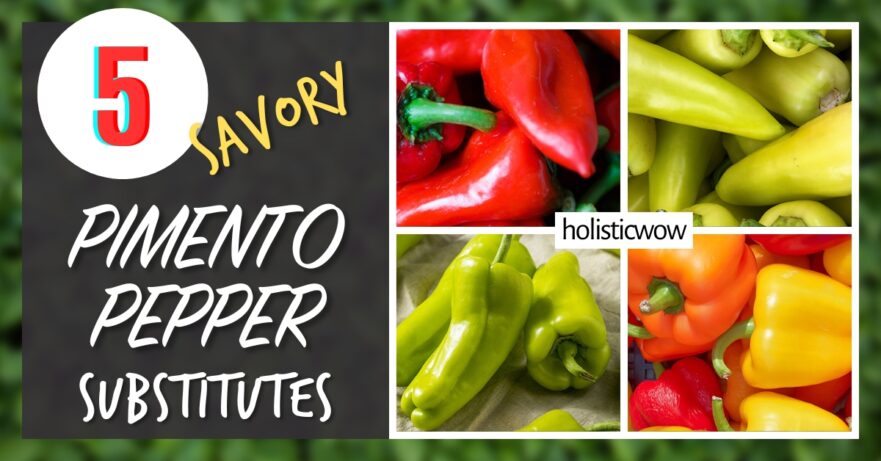Pimento peppers, renowned for their sweet flavor and mild heat, typically range from 100 to 500 on the Scoville Heat Unit (SHU) scale, making them a favored ingredient in various cuisines. These peppers are instantly recognizable by their vibrant red color and heart-shaped form, essential for dishes that favor a gentle, sweet taste. This article delves into a selection of alternatives, each distinct in taste and heat intensity. Offering flavors from mildly spicy to tangy and sweet, these substitutes provide culinary versatility. Whether aiming to replicate the mild warmth of pimento peppers or exploring new flavor dimensions, these alternatives empower chefs to expand their culinary repertoire.
Key Takeaways
- Piquillo Peppers: Hotter than pimentos, they bring a unique sweet and tangy flavor, suitable for Spanish dishes and similar culinary applications.
- Banana Peppers: Comparable in heat to pimentos, they offer a sweet and mild taste, making them versatile for salads and pickling.
- Cubanelle Peppers: Slightly hotter than pimentos, they are ideal for frying, stuffing, and roasting, offering a subtly sweet flavor.
- Peppadew Peppers: Hotter than pimentos, these peppers provide a distinct sweet and slightly spicy taste, especially popular in pickled forms.
- Bell Peppers: With no heat, they are a great choice for dishes that require a mild, sweet pepper, adding color and a natural sweet touch.
This assortment of pimento pepper substitutes offers a spectrum of tastes and heat levels, catering to diverse culinary preferences. From the sweet and tangy allure of piquillo peppers to the gentle warmth of banana peppers, these alternatives allow chefs to adjust the spiciness of their recipes while maintaining the core qualities of pimento peppers. Whether it’s the vibrant, zero-heat bell pepper for a mild dish or the subtly spicy cubanelle pepper for an extra zing, there is a choice for every taste bud. This variety ensures a flavorful and comprehensive culinary journey, enabling the preservation of traditional pimento pepper flavors and the exploration of new, exciting taste profiles.
5 Vibrant Substitutes to Transform Your Pimento Pepper Dishes
1. Piquillo Peppers
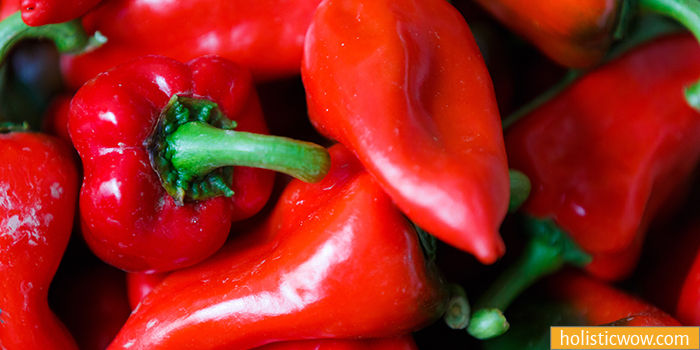
Piquillo peppers are 2.5 times hotter than pimento peppers.
(on average, based on available data)
Why are piquillo peppers a good substitute for pimento peppers?
Piquillo peppers offer a comparable sweetness and mild heat, enhancing dishes similarly to pimento peppers with a subtle, tangy twist.
Piquillo peppers, with a Scoville rating of 500 to 1,000 SHU, are a staple in Spanish cuisine, known for their sweet taste and mild heat. These peppers are ideal for dishes requiring vibrant, yet not overwhelming, spiciness. Their deep red color and characteristic shape enhance the visual appeal of recipes like roasted red peppers and stuffed peppers. The unique sweet and tangy profile of piquillo peppers makes them a suitable substitute for pimento peppers, offering a similar flavor and mild chili pepper experience. Their distinct taste and texture seamlessly integrate into culinary applications traditionally calling for pimento peppers.
2. Banana Peppers
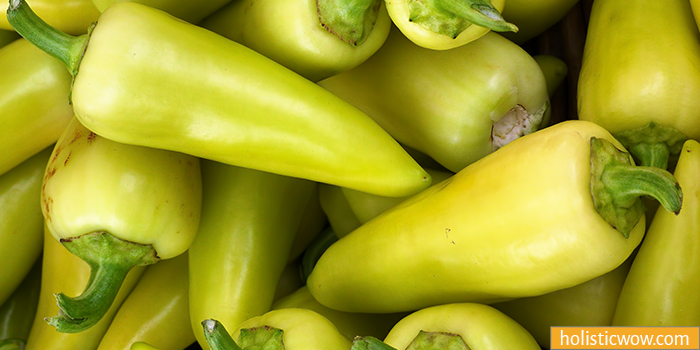
Banana peppers align closely with pimento peppers regarding heat level.
| Pimento pepper | Banana pepper | |
| SHU | 100 - 500 | 0 - 500 |
| Median SHU | 300 | 250 |
| Flavor | Sweet and mild, succulent | Sweet and tangy, with a mild heat |
| Species | Capsicum annuum | Capsicum annuum |
| Origin | Central America and Europe | South America (believed) |
| Uses | Stuffed in olives, pimento cheese, salads, etc. | Pickling, stuffing, roasting, grilling, salads, etc. |
Why are banana peppers a good substitute for pimento peppers?
Banana peppers offer a sweet flavor and mild heat, closely matching pimento peppers in fresh salads and pickled preparations.
Banana peppers, with a Scoville Heat Unit range of 0 to 500, are celebrated for their mild chili pepper profile and sweet taste. Their distinctive yellow-green color and shape, similar to bananas, add visual interest to dishes. These peppers are particularly versatile and ideal for both raw and cooked applications. They are a great substitute for pimento peppers in various culinary contexts, including fresh salads and pickled preparations, where a gentle, sweet flavor and mild spiciness are desired. This adaptability makes banana peppers a fitting alternative in recipes traditionally using pimento peppers.
3. Cubanelle Peppers
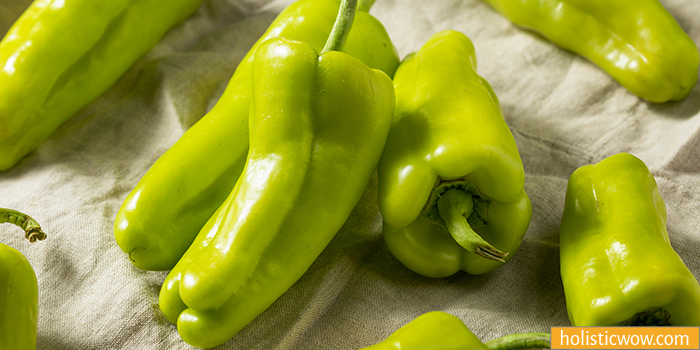
Cubanelle peppers are 2 times hotter than pimento peppers.
(on average, based on available data)
| Pimento pepper | Cubanelle pepper | |
| SHU | 100 - 500 | 100 - 1,000 |
| Median SHU | 300 | 550 |
| Flavor | Sweet and mild, succulent | Mild and sweet, with a slight heat |
| Species | Capsicum annuum | Capsicum annuum |
| Origin | Central America and Europe | South and Central America, but commonly grown in Italy too |
| Uses | Stuffed in olives, pimento cheese, salads, etc. | Salads, stir-fries, stuffing, sandwiches, etc. |
Why are cubanelle peppers a good substitute for pimento peppers?
Cubanelle peppers, also known as Italian frying peppers, provide a sweet taste and versatility, perfect for recipes like stuffed peppers and roasted dishes.
Cubanelle peppers, with a Scoville rating of 100 to 1,000 SHU, are known for their mild heat and subtly sweet flavor. Their distinct light green color and elongated shape make them ideal for various culinary applications, including frying and stuffing. In recipes, these peppers are a superb substitute for pimento peppers that call for a mild yet sweet taste without excessive heat. Their texture and flavor are particularly suited for dishes like stuffed peppers, salads, and roasted pepper preparations. Cubanelle peppers add a unique touch to dishes, offering a similar sweetness and mild spiciness that complements a wide range of recipes.
4. Peppadew Peppers
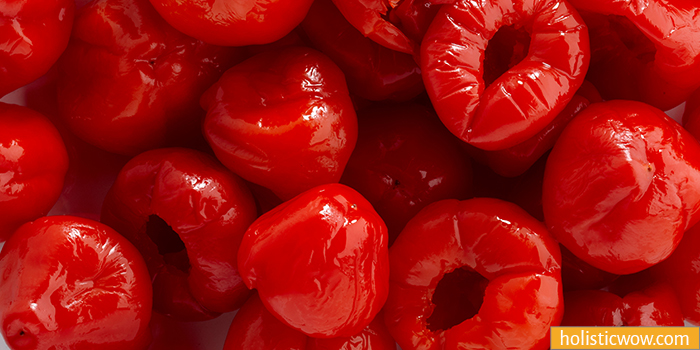
Peppadew peppers are 4 times hotter than pimento peppers.
(on average, based on available data)
| Pimento pepper | Peppadew pepper / Sweet piquanté peppers / Juanita peppers | |
| SHU | 100 - 500 | 1,177 - 1,177 |
| Median SHU | 300 | 1,177 |
| Flavor | Sweet and mild, succulent | Sweet and tangy, with a mild to moderate heat |
| Species | Capsicum annuum | Capsicum baccatum |
| Origin | Central America and Europe | South Africa |
| Uses | Stuffed in olives, pimento cheese, salads, etc. | Snacks, salads, sandwiches, pizza, etc. |
Why are Peppadew peppers a good substitute for pimento peppers?
Peppadew peppers offer a unique sweet and slightly spicy flavor with a tangy zest from pickling, perfect for enhancing dishes like pimento cheese and pickled preparations.
The Peppadew pepper, with a heat level of 1,177 SHU, is notable for its sweet flavor and mild heat. Their bright red color and round shape add a charming touch to any dish. Predominantly consumed pickled, they blend a sweet taste with a subtle spiciness, making them a versatile substitute for pimento peppers in stuffed peppers, roasted red peppers, and pimento cheese recipes. Their tangy flavor, enhanced by the pickling process, adds a distinct twist, enhancing the overall palatability of dishes that traditionally include pimento. This unique combination of sweetness and tang makes Peppadew peppers a fitting alternative in various culinary applications.
5. Bell Peppers
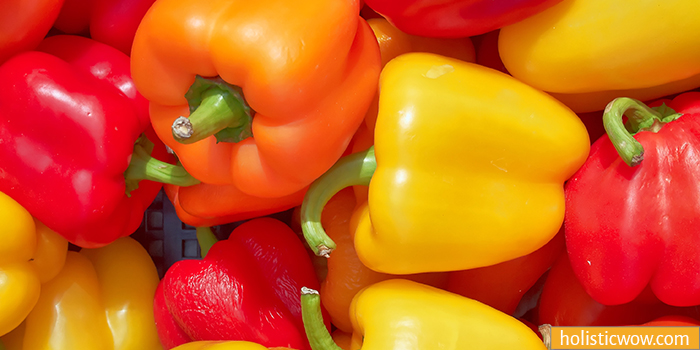
Bell peppers are significantly milder than pimento peppers.
| Pimento pepper | Bell pepper | |
| SHU | 100 - 500 | 0 - 0 |
| Median SHU | 300 | 0 |
| Flavor | Sweet and mild, succulent | Sweet and mild, with no heat |
| Species | Capsicum annuum | Capsicum annuum |
| Origin | Central America and Europe | Mexico, Central America, the Caribbean and northern South America |
| Uses | Stuffed in olives, pimento cheese, salads, etc. | Raw or cooked in a variety of dishes, salads, etc. |
Why are bell peppers a good substitute for pimento peppers?
Bell peppers offer a sweet flavor with no heat, perfect as a pimento substitute in stuffed peppers and roasted dishes.
Bell peppers, with a Scoville rating of 0, exemplify sweet peppers. Available in red, green, yellow, and other vivid colors, they offer a diverse and sweet flavor. Their large size and thick walls are ideal for stuffed peppers and serving as a pimento substitute in recipes requiring a gentle, sweet taste. These peppers are perfect both raw in salads and cooked in various dishes, contributing vibrant color and a naturally sweet touch without any spiciness. This versatility makes them a fitting choice for various culinary uses, particularly where a milder, sweet pepper flavor is desired.
